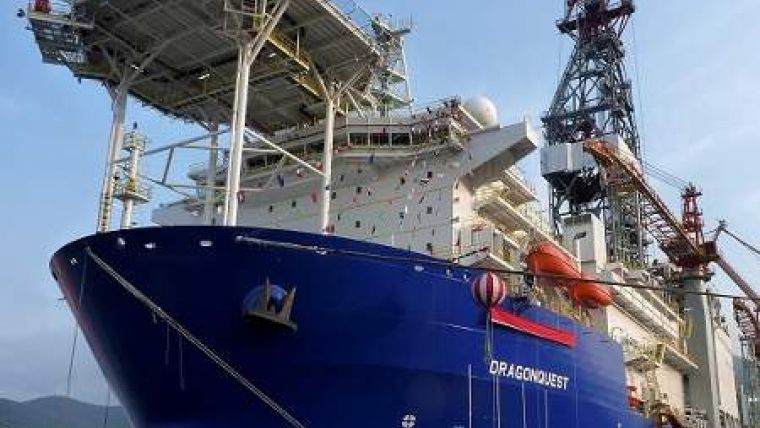DP Inertial Navigation System for Drillship
A first order for a Dynamic Positioning Inertial Navigation System (DP-INS) on a drillship has been received by Sonardyne International. Vantage Drilling's new 12,000 feet-rated drillship, Dragonquest, is set to become the first deep water drilling unit in the world to be equipped with the new system when it begins operations in the Gulf of Mexico for Petrobras later this year.
Sonardyne DP-INS aids vessel positioning through the integration of acoustic and inertial technologies and has been developed to meet regulatory requirements which state that deep water drilling units must be equipped with three independent position reference inputs to their DP system.
Traditionally, an acoustic positioning system and two separate DGPS systems are used. However, a vulnerability remains should the acoustics be affected by aeration and noise and both GPS systems be simultaneously affected by signal disruption. The latter is particularly common around equatorial regions and during periods of high solar radiation. Solar activity is currently increasing and is forecasted by NASA to peak in 2013.
Consequently, there is a recognised need amongst operators for a third, independent DP reference that would allow safe rejection of a positioning error in one of the other two reference types
DP-INS combines the complementary characteristics of Sonardyne's Long and Ultra-Short BaseLine (LUSBL) positioning technology, with high integrity inertial measurements from its Lodestar AHRS/INS platform. The resulting output is resilient to short-term acoustic disruptions and completely independent from GPS.
A single navigation solution is computed and output to a display with intuitive status and quality metrics. Standard output telegrams are available for Converteam, L3 or Kongsberg DP systems.
In addition to the system's deep water positioning performance and safety benefits, Sonardyne DP-INS claims to deliver costs savings. It can be used with fewer acoustic transponders deployed on the seabed, significantly reducing set-up time following a vessel's arrival on location. The system also only needs occasional aiding from the acoustic system, extending transponder battery life and reducing maintenance operations.
Image: Dragonquest is the second of three vessels being constructed at the DSME shipyard in Korea for Vantage Drilling.














